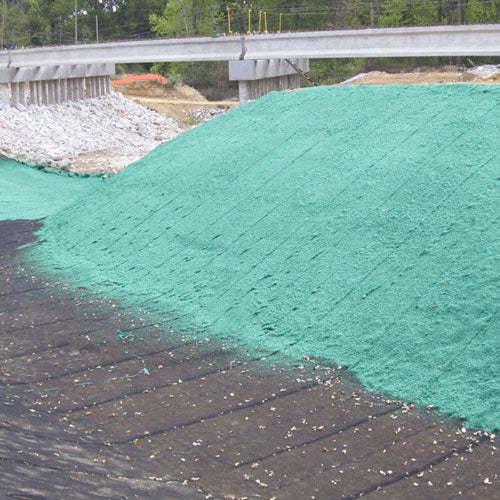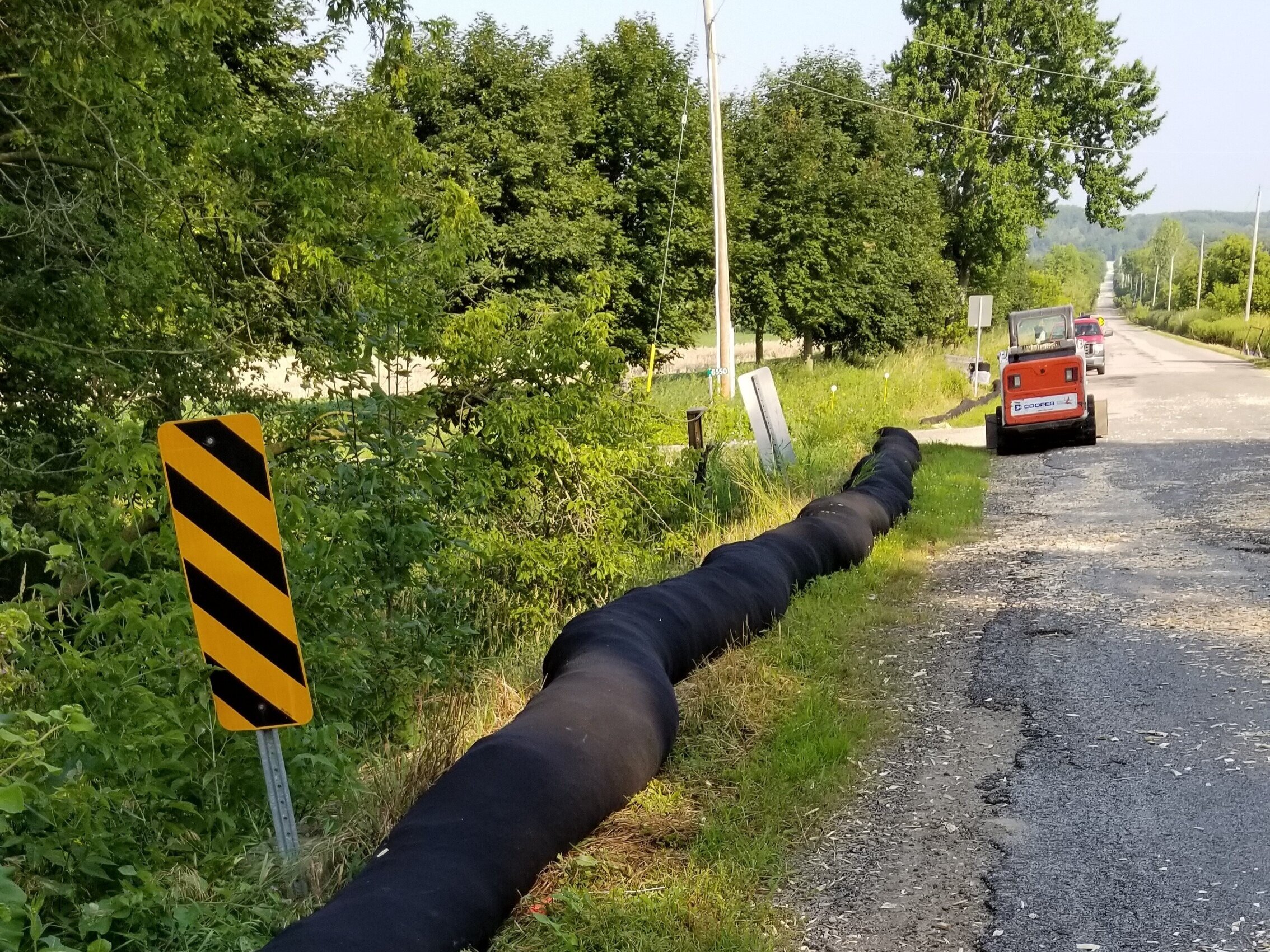Reliable Strategies by Memphis Erosion Control Solutions erosion control
Wiki Article
Ideal Practices for Erosion Control in Construction Projects
Are you working on a construction project and concerned about disintegration control? In this post, we will lead you through the ideal methods for protecting against erosion on your website. Memphis Erosion Control Solutions Memphis TN. Get all set to deal with erosion head-on and make certain the success of your building task.5 Necessary Erosion Control Methods

To effectively manage erosion on your building and construction site, you'll require to implement crucial techniques such as incline stabilization and sediment control measures. Incline stabilization is critical in stopping soil disintegration on high slopes. You can achieve this by making use of approaches like terracing, which involves creating horizontal steps on the slope to reduce water circulation and advertise the absorption of rain. An additional efficient strategy is making use of erosion control coverings or mats, which are put on the incline and help retain soil particles while permitting plant life to grow. Debris control procedures are additionally crucial to avoid debris drainage right into close-by water bodies. One effective approach is the installment of silt fencings along the perimeter of the building website. These fences work as barriers, catching sediment-laden water and enabling it to clear up before it gets to the water bodies. Furthermore, you can utilize sediment basins, which are momentary retention fish ponds developed to trap sediment and permit water to slowly drain pipes off. Implementing these vital disintegration control strategies will help reduce the adverse environmental impact of your building task and make certain conformity with regulations.
Efficient Sediment and Drainage Administration

You can properly manage sediment and overflow in your building job by carrying out correct disintegration control measures. Sediment and overflow monitoring is critical to prevent erosion and protect the surrounding environment. One effective measure is the installation of silt fences along the perimeter of the construction site. These fences aid to contain sediment and avoid it from going into neighboring water bodies. An additional crucial practice is the application of disintegration control coverings or mats. These blankets supply a safety layer on bare soil, minimizing the effect of rainfall and avoiding erosion. In addition, making use of debris basins or sediment catches can assist to capture sediment and stop it from getting in stormwater systems. Routine maintenance of these measures is necessary to guarantee their efficiency throughout the building project. This consists of checking and cleaning up sediment containers and regularly changing silt fences and disintegration control blankets as required. By carrying out these erosion control actions, you can successfully handle sediment and drainage in your building task, lessening the effect on the environment and abiding with regulative demands.
Secret Factors To Consider for Slope Stabilization
When taking into consideration slope stablizing, it's essential to analyze the surface and determine prospective locations of instability. You require to thoroughly take a look at the incline's characteristics, such as its water drainage, angle, and make-up patterns. Look for indications of erosion, such as subjected origins, splits, or down soil. These signs can offer you an idea of where stabilization measures may be essential.Another option is to grow plants on the incline, as the roots can aid secure the dirt and control disintegration. Furthermore, setting discover this up erosion control coverings or floor coverings can give immediate defense while greenery ends up being well established.
It's critical to regularly check the maintained inclines to ensure their effectiveness. Keep an eye out for any kind of indicators of activity or disintegration, and take immediate activity if essential. Normal upkeep, such as evaluating and repairing any type of broken procedures, is likewise necessary to ensure long-term security.
Best Practices for Greenery and Soil Defense
One reliable method to shield vegetation and soil on slopes is by consistently inspecting for indications of disintegration and taking immediate action if needed. By being watchful and aggressive, you can prevent additional damages and make certain the security of the incline. Start by checking the incline for any kind of indications of disintegration, such as revealed origins, more bare soil patches, or debris buildup near the bottom. If you observe any one of these indicators, it is critical to address the problem quickly. Implement erosion control steps such as setting up erosion control blankets, mulching, and even constructing keeping walls if needed. Furthermore, growing plants can substantially aid in maintaining the soil. Choose indigenous plants that have deep origin systems, as they are extra effective in preventing erosion. Make certain to frequently examine the health and wellness of the plants and provide essential upkeep, like watering and feeding. Keep in mind, disintegration can swiftly get worse and trigger serious damage, so it's necessary to resolve it immediately. By taking positive steps and routinely keeping an eye on the slope, you can secure the plant life and soil, guaranteeing the long-term stability of the location.Applying Appropriate Drain Systems
To successfully implement appropriate water drainage systems, it's essential to think about the slope gradient and soil kind. When it comes to managing water flow and stopping disintegration, recognizing these elements is essential. The incline gradient plays a substantial duty in determining exactly how water moves across the land. Steeper slopes can cause faster water flow, increasing the threat of erosion and flooding. On the other hand, gentler inclines allow water to stream a lot more gradually, reducing erosion possibility. By evaluating the incline gradient, you can develop a reliable drainage system that suits the all-natural water motion.Soil type also affects water drainage system design. Different soil types have differing levels of permeability, impacting how water is absorbed and drained pipes. Sandy dirts have a tendency to drain pipes faster due to their crude structure, while clay dirts have a slower drainage rate due to their small nature. Comprehending the dirt kind helps in choosing proper drain methods, such as using permeable products or mounting French drains. Furthermore, considering the soil features aids stop waterlogging, which can cause poor plant growth and damages to structures.
Verdict
In final thought, when it concerns erosion control in building tasks, you need to follow these finest techniques. Execute efficient debris and runoff administration strategies to avoid air pollution. Take into consideration slope stablizing approaches to ensure the stability of the site. Shield vegetation and soil by utilizing ideal steps. Establish correct water drainage systems to manage water flow (hydroseeding). By following visit this site right here these vital methods, you can properly regulate disintegration and make certain the success of your building and construction task.To efficiently control disintegration on your building site, you'll require to apply necessary methods such as slope stablizing and sediment control measures. Incline stabilization is essential in preventing dirt disintegration on high slopes. An additional efficient technique is the usage of erosion control coverings or floor coverings, which are placed on the incline and assistance retain dirt particles while permitting plants to grow. An additional option is to grow vegetation on the incline, as the roots can aid anchor the dirt and control erosion. Implement disintegration control procedures such as installing disintegration control blankets, mulching, or also constructing preserving walls if required.
Report this wiki page